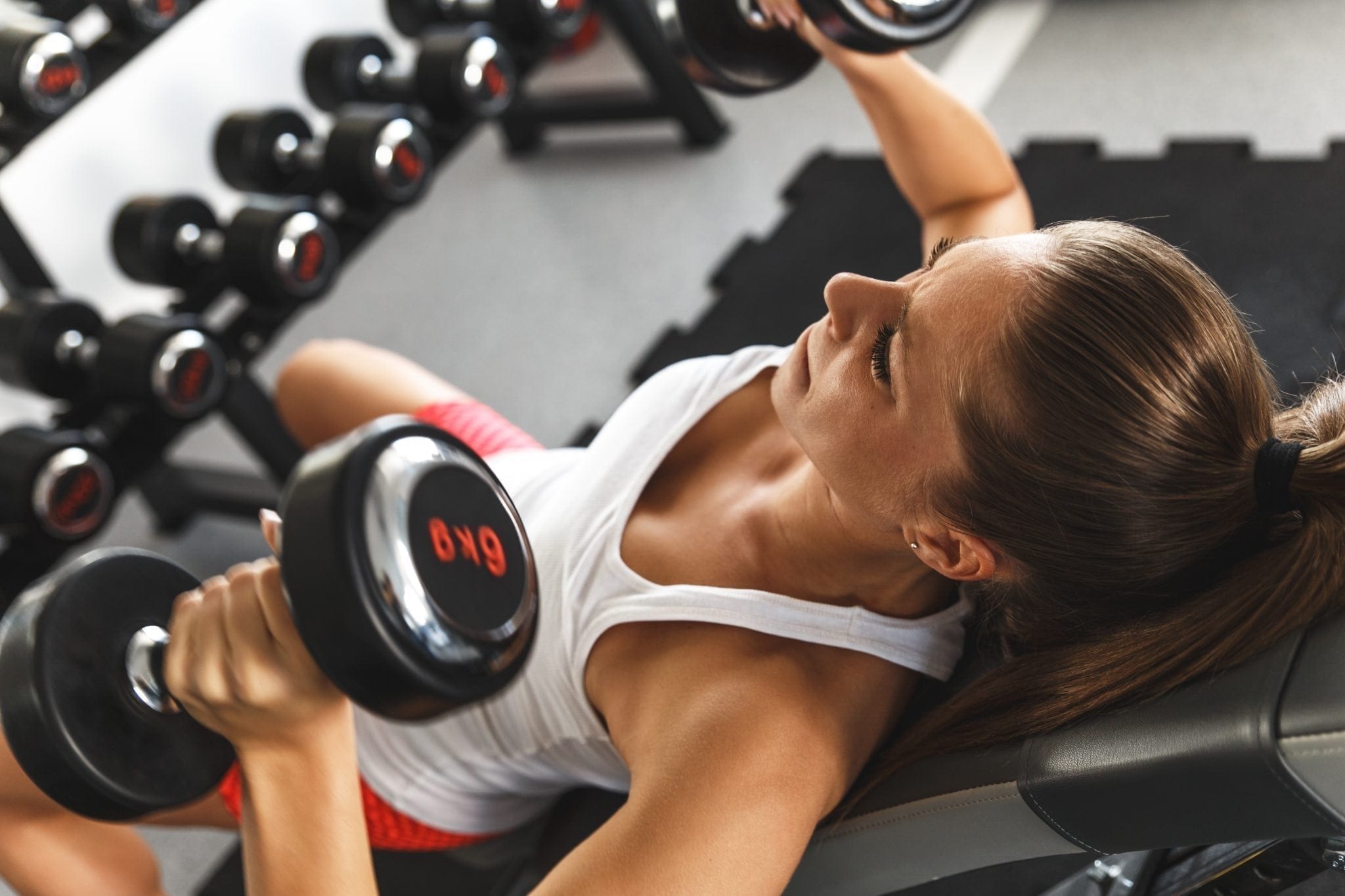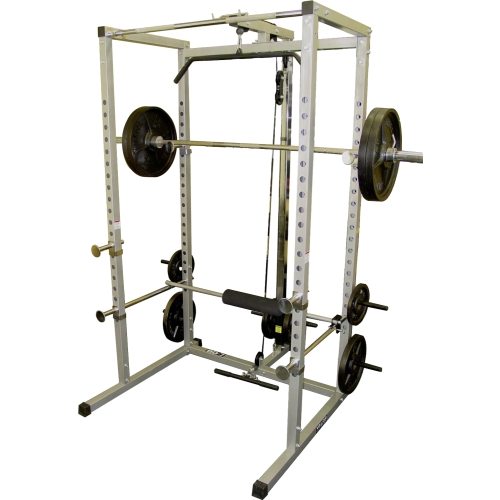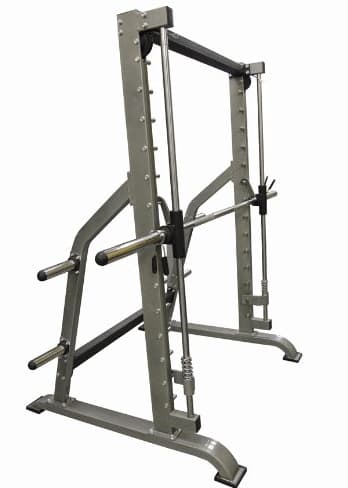The weight room comes with all sorts of fun connotations and associations. For some, it’s a musty place where people grunt as they throw down weights with their 20-inch biceps. For others, it’s a place to do a few curls and leave without taking full advantage of what’s available. And some manage to put on their blinders and get a really great workout.
Whether you’re looking to refresh your current strength training routine or are starting from scratch in the weight room, we’ve got answers to many of the frequently asked questions.
Let’s start at the beginning: What are all these black and metal things?
Well, there are a few different kinds:
Free weights: These guys can range anywhere from five pounds to 150 pounds. Lighter weights are usually used for single muscle exercises (think: bicep curls, tricep extensions) whereas heavier weights are better for compound exercises (think: shoulder presses, chest or reverse flyes, weighted squats). If you’re not sure where to start, grab a lighter weight and work your way up. How do you know if you are using the right weight? You should be able to perform 8-12 repetitions of an exercise in a row and feel fatigued on that final repetition.
Olympic Bar: These all weigh 45 pounds and can be used for many different activities, including the bench press, squat rack, or functional movements like a clean and jerk. Note: You may also see bar weights, which are long bars with set weights on each end. These typically range from 20 to 100 pounds and can be used to perform weighted squats, lunges, shoulder presses, rows, curls and more.
Plates: These are weighted plates that you can add onto an Olympic bar.
Clips: These are used to hold in the plates on your bars. Make sure you secure your plates on or else they will slip off and cause some damage.
Bench press: This is a flat bench with a bar propped above the chest area. This is how you use it, but if it’s your first time using this, seek a trainer to assist you for safety reasons.
Squat rack: These machines often get hogged, but if you ever see it empty, grab a friend or trainer and take a turn at it. If it’s your first time using this machine, it’s really important to have someone nearby to spot you and/or check for good form. To properly prepare your squat rack, begin by clearing off the rack of any weights (but if the person before you had good etiquette, it should have already been cleared). Walk up to the bar and assess it for proper height — it should come right between your chin and mid-chest. If it’s too high or too low, lift the bar off the rack and have your partner adjust the holsters where the weight rests.
To perform your first weighted squat, walk in front of the bar while it is still resting on its holsters. Bend your elbows and position your hands slightly behind your shoulders. Place your hands on the bar, positioning yourself directly in the middle. Let the bar rest on the meaty part of your shoulders. Once you feel completely comfortable, gently lift the bar off of its holsters and pause to gain balance. Your feet should be a little more than hip-width apart and you should be standing very tall. From here, keep your chest lifted as you sit into your squat, bending from your ankles, knees, and then hips. Keep your spine long and neutral as you come into your squat and then stand back up.
Again, if it’s your first time, ask for someone to check your form.
Smith Machine: You may see some of these machines hanging around the gym, too. They are very similar to a squat rack, but the bar is connected by a pulley system to the rack, making you feel a bit safer and supported. It’s a good place to start if it’s your first time doing weighted squats.
Kettlebells: These funky looking things are known for their combination of cardio and strength training benefits. You can start really basic with moves such as the kettlebell swing, squat press, or pull. Form is everything with kettlebells, so ask a trainer for some pointers before you get started.
Great. Now that I know what the equipment looks like, how do I understand the workouts?
Here’s how to parse some of that confusing lingo
“Rep” or “Repetition”: When someone says they’ve done “10 reps,” they are saying that they performed one single move 10 times. It’s basically a count.
“Set”: Reps make up a set. For example, those “10 reps” are known as one set. You can determine the number of reps that make up a set, but it’s usually a number in the double digits (or single digits if you’re lifting really heavy).
Let’s apply this:
“I just did 3 sets of 15 squats, lunges, and push-ups.”
This means that one set = 15 reps of squats, 15 reps of lunges, and 15 reps of push-ups. They did that whole set three times.
What about etiquette? Where do I put my stuff? What if the weights get all sweaty?
Etiquette is everything in the gym. Some people are no good at it, but that doesn’t mean you should be one of them. Follow these tips to make the most of your (and everyone’s) time and experience.
1. Have an idea of what your workout will be so that you don’t end up “hogging” equipment.
Sometimes the squat rack is on one end of the gym, while the bench press is on the other end. Instead of placing your towel on both pieces and attempting to “claim” them for 30 minutes, plan one workout (or a few sets) around the squat rack, then plan a separate workout (or another few sets) around the bench press. In peak times, this will be helpful to both you and your fellow gym-goers.
2. Carry a towel and wipe equipment down before and after use.
I like to have two towels with me — one for wiping equipment and another for wiping my own sweat. Many gyms also have a spray bottle or disinfecting wipes. Be kind and clean to yourself and others by wiping down your space.
3. Put weights back when you’re done.
If you can lift it up to work out, you can definitely lift it up to put it back. Weights are heavy (crazy, right?), so don’t let that job fall to someone else. Put all weights back when you’re done using them, and clear off any bars that you have loaded. (If it’s too heavy, bro, maybe cut a rep or two next time in the name of courtesy.)
4. It’s OK to share.
Especially if it’s peak hours, don’t be shy about asking someone how many more sets they have on a piece of equipment you want to use (just don’t be rude or annoying or ask them mid-squat!). And if you’re the one with all the equipment other people want, be open to share requests. For example, if you’re doing some movements that use free weights and some that use different equipment, consider letting another lifter use the free weights when you’re not.
5. It’s OK to ask.
Not sure what you’re doing? Ask someone. It doesn’t have to be a trainer — although it’s preferred — but sometimes the regular gym junkie can at least get you set up. People would rather set you up in good form and with good knowledge than watch you get injured.












